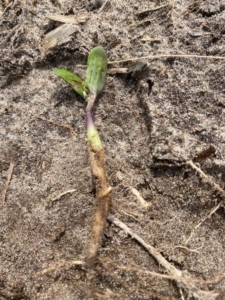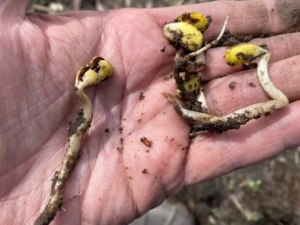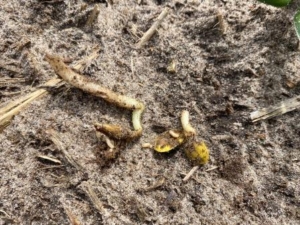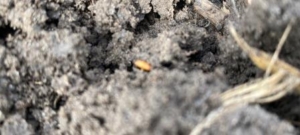Agronomic Update May 26, 2020 – Seed Corn Maggots in Soybeans…..
This is a quick update on seed corn maggots infestations in soybeans. Seed corn maggot infestation levels are usually very low, however, we are finding them in some area soybean fields in higher numbers than usual….in fact, in higher numbers than we have seen in 20+ years. Seed corn maggot flies are attracted to decaying organic matter, so things such as manure, dead cover crops, etc. Like most maggots, they are secondary feeders, which mean they feed on, and are most attracted to decaying tissue; however, they will feed on germinating crop seeds. See link below for a recent UNL Cropwatch article seed corn maggots.
https://cropwatch.unl.edu/2019/avoiding-injury-seed-corn-maggot
So far they are most prevalent in tilled fields. As the article states, they will be most likely to cause damage when germination and emergence is delayed…all of which we have experienced so far this whole month of May. Please be aware of this insect and check your plant stands over the next couple of weeks to see if you have higher numbers of this insect present. Besides cultural practices, the only other control for this insect is an insecticide seed treatment. However, under high infestations, even this would not be enough to give full control of the pest. Again, currently we are seeing higher numbers of this pest than usual. This could also be influenced by the higher percentage of soybeans that were planted early this year. We could have more overlap between maggot egg-laying and soybeans trying to emerge than in most previous years. Thank you!

Emerged plant showing feeding on the hypocotyl with a maggot still inside the hypocotyl. Note the maggot tunneling feeding on the cotyledon’s before they emerged.


Two pictures showing damage to soybeans before they emerged, which is what typically occurs with seed corn maggot infestations. Note the large number of maggots in the cotyledons’ on the picture to the right.

Blurry image, but this is a picture of the pupa of the maggot. In one field with severely reduced plant stands, I was easily finding these pupa in the seed zone as I dug in those areas of the field that had gaps, where no emerged plants were.

